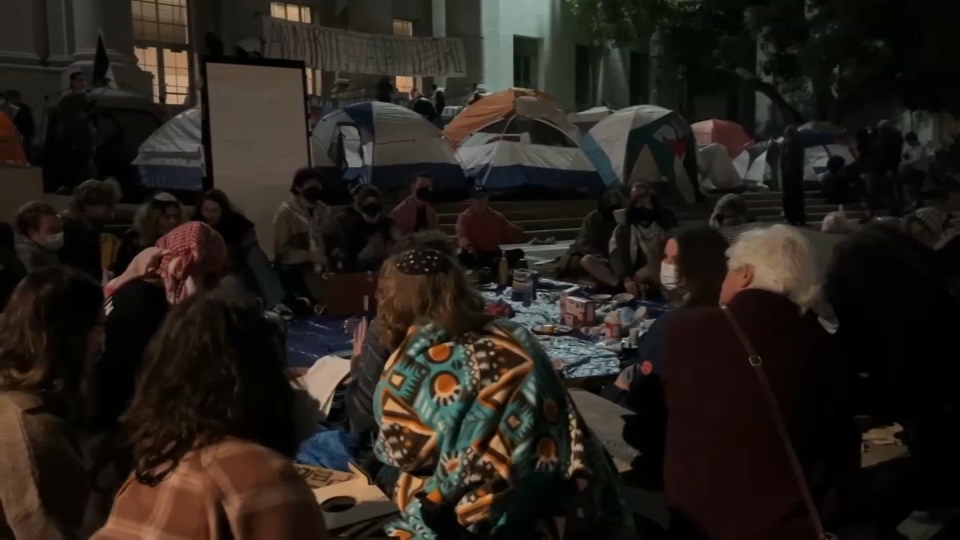After decades sitting abandoned to decay and a near date with the wrecking ball, the Angel Island Immigration Station historic hospital has opened as a museum to the public for the first time -- following a $12 million, 14-year restoration.
The restored hospital, which treated thousands of immigrant patients between 1910-1940, is now filled with exhibits highlighting the immigrant experience from the era of its service to modern times.
"There’s nothing like being in a place where history happened," said Edward Tepporn, executive director of the Angel Island Immigration Station Foundation, "to be able to connect not only with the stories, but also and perhaps more importantly the emotions of what happened here."
The immigration station, sometimes referred to as the Ellis Island of the West, has a more dubious role in immigration history than its East Coast cousin. Thousands of immigrants were detained on the island, some for up to two years. The hospital not only played a role in treating immigrants, but also in keeping some out.
Get a weekly recap of the latest San Francisco Bay Area housing news. Sign up for NBC Bay Area’s Housing Deconstructed newsletter.
The government screened for certain diseases that would automatically disqualify a person from coming to the U.S., with many of the targeted diseases more prevalent among immigrants -- mostly from Asian countries -- which the government hoped to prevent from remaining in the country.

"Of course doctors are supposed to help people get better," said Casey Dexter-Lee, an interpreter with California State Parks which runs the site, "but they also had a role here in helping exclude people that were considered undesirable by the American government at the time."
Local
The hospital closed in 1945 following the end of World War II and unlike other buildings at the station which became a public museum, it was abandoned. It was so decrepit at one point, it was slated to be torn down in the 1970s. But it was spared by a prevailing effort to save the building and re-imagine it as a museum.
Tepporn walked through the building showing-off the refurbished operating room with its tile floor and sweeping view of the surrounding bay. The room was flanked by large photos showing groups of newly arrived foreigners undergoing rigid inspections by doctors.
The station processed 500,000 people from 80 countries during its time in operation. Thousands of immigrants were detained for long periods on the island, along with German and Italian military prisoners during World War II. The station's barracks still display poems inscribed on the walls by Chinese and other detainees who were forced to remain on the island.
"It’s so important to remember that every single member is an individual," Tepporn said, "every individual has a family, a community, a circle of friends that they’re connected to."
The hospitals rooms have been transformed into exhibits around a central theme of immigration. One room features individual stories of some who were detained on the island including Kane Watanabe, the mother of U.S. Secretary of Transportation Norman Mineta. Another exhibit traces the impacts of U.S. immigration policy to modern times, with images of Mexican farmworkers picking vegetables in the fields
"We’re able to learn about the stories and histories of immigration policy that happened back then," Tepporn said, "but then how they also were similar to some immigration policies of today."
In addition to a museum, the hospital will also function as a meeting space, with its refurbished rooms able to accommodate groups on one of the Bay Area's most scenic places -- where pristine nature seems worlds away from the bustling cities that surround it.
But even among the tidy, polished rooms -- are some doors and rooms purposely left in their raw, aged condition -- imbued with a patina to remind visitors of the building's long, complicated history.
"The hospital represents a mix of both sad and happy stories," Tepporn said. "for some people this was where their immigration process to the U.S. ended."



